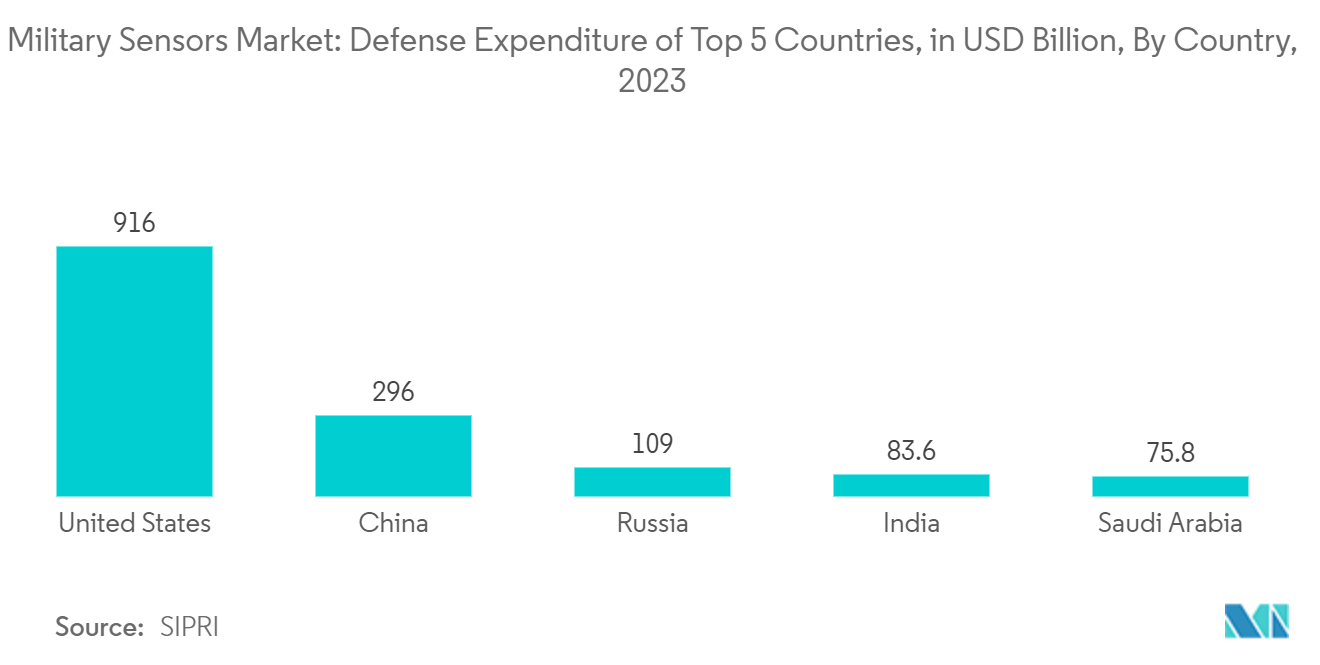Market Trends of Military Sensors Industry
Airborne Segment Expected to Register the Highest CAGR During the Forecast Period
Modern military planes are made to do different kinds of missions. An increase in the global aerial fleet has led to a rise in the demand for military sensors in airborne segments. Countries like the US, India, China, Iran, Israel, and Russia, among others, have invested in modernizing and upgrading their existing air fleets. China uses stealth technology in unmanned platforms and is unveiling more UAV variants. Furthermore, rising global expenditure and rising spending on enhancing defense capabilities drive market growth.
Moreover, compared to manned platforms, the cost-effectiveness and ease of operations of unmanned platforms aided the rapid adoption of UAVs in defense applications (for both surveillance and attack operations). Military organizations are also broadly deploying unmanned platforms in conflict regions worldwide. In September 2022, the US Army awarded phase two contracts to defense firms RTX Corporation and L3Harris Technologies, Inc. for developing prototype sensors to support the service’s next-gen airborne intelligence, surveillance, and reconnaissance program dubbed HADES. These factors render a positive outlook for the airborne military sensors segment of the market during the forecast period.

Asia-Pacific is Expected to Generate the Highest Demand During the Forecast Period
The Asia-Pacific region is expected to generate the highest demand for military sensors due to the several ongoing programs fostering the modernization of the regional defense forces during the forecast period. In the Asia-Pacific, several modernization programs are underway to enhance the current capabilities of the commercial and military end-users in the region. For instance, Indonesia’s Defence Ministry sealed a deal with Turkey to acquire 12 cutting-edge drones valued at USD 300 million, marking another step in its ongoing efforts to modernize its aging military equipment.
In terms of operational fleet, the region has the largest fleet of aircraft and rotorcraft, with 14,529 aircraft. Combat aircraft constitute about 4,998, 520 particular purpose aircraft, 46 tankers, 1,008 transport, and 3,079 training and helicopters. The increasing geopolitical tensions between neighboring nations and the rising demand for advanced threat detection systems are expected to aid the market growth in this region.


